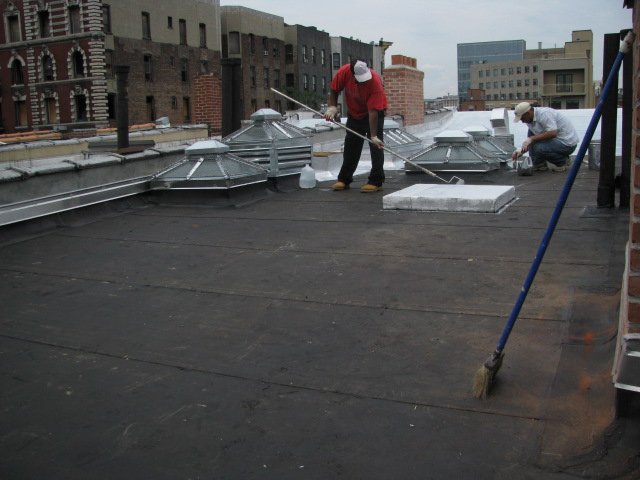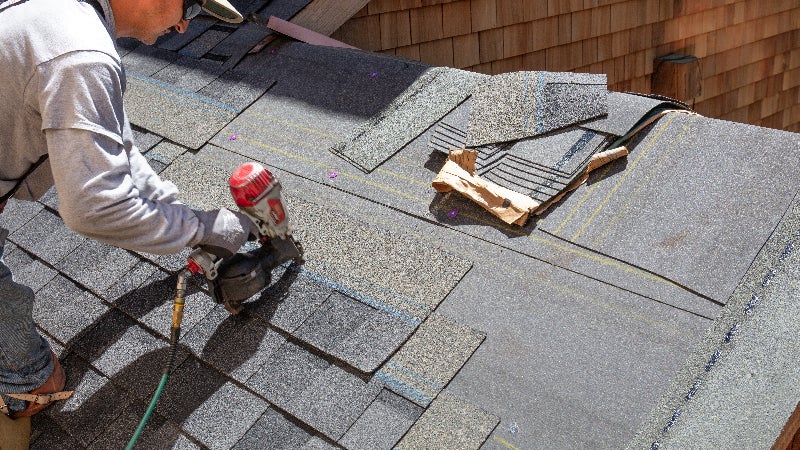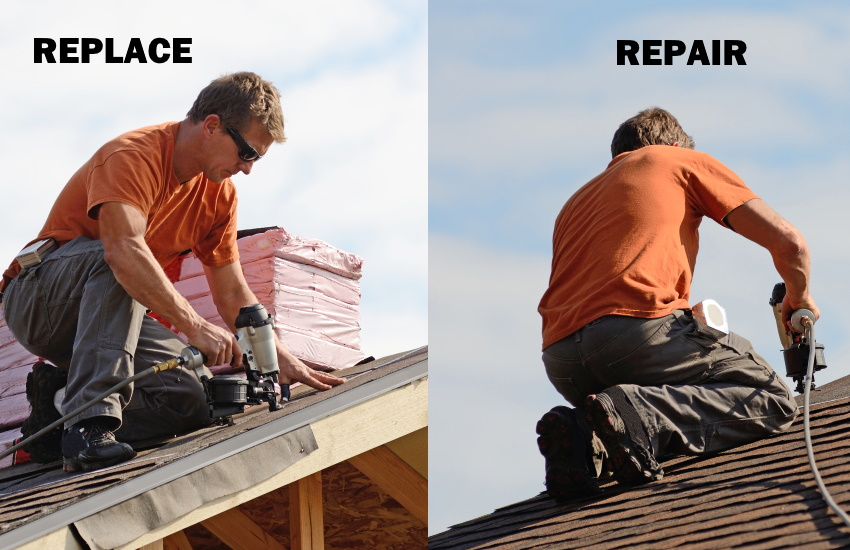What Variables Impact the Expense of Your Roofing System Replacement and How to Estimate Them
Recognizing the price of roofing substitute involves a multifaceted approach that makes up different influencing factors. From the option of roof covering materials to the intricacies of your roofing system's design, each component plays a substantial function in identifying the total expenditure. Labor expenses and geographic factors to consider can drastically alter your spending plan. By analyzing these aspects very closely, you can acquire understandings into just how to estimate the economic commitment needed for your roof project. The complexities of these variables typically lead to unanticipated challenges that are crucial to navigate.

Roofing Product Choices
When thinking about a roof replacement, the selection of roofing materials plays a critical role in both the aesthetic allure and longevity of your home. Choosing the ideal product can considerably affect the total cost of your project, as various alternatives vary in upkeep, rate, and durability demands.
Steel roof covering uses exceptional resilience and can last 40 to 70 years, making it an appealing long-term financial investment. The initial cost is greater contrasted to asphalt (Free Roof Estimate).
For a much more conventional appearance, timber shakes provide all-natural charm but call for routine upkeep to avoid rot and bug damages. Slate and ceramic tile roofing, while magnificent and very resilient, are amongst the most costly options and commonly require customized installation. Inevitably, the choice of roof covering material need to align with your spending plan, climate factors to consider, and personal design choices, as each material offers unique benefits and disadvantages that can affect the total expense of your roof covering replacement.

Roof Dimension and Intricacy
Taking into consideration the complexities of roof size and intricacy is important for properly estimating the expense of a roof substitute. The complete area of the roofing straight influences product and labor prices; larger roofings normally require more products and might necessitate extra labor force to finish the job effectively. A specific measurement of roofing system measurements, consisting of the pitch and slope, is important, as steeper roof coverings frequently need customized safety and security equipment and methods, additionally raising prices.
Complexity also plays a considerable duty in determining expenses. Roofing systems with several aspects, such as dormers, valleys, and gables, involve more intricate styles and cuts, demanding higher skill levels and additional labor. Additionally, roofing systems with non-traditional shapes may require customized materials or installation methods, which can escalate prices.
Moreover, the existing roof problem can influence both dimension and complexity. If architectural repair services or reinforcement are needed, these elements will include in the total expenditure. Eventually, an accurate analysis of roof covering dimension and complexity not only aids in approximating expenses but additionally makes certain that home owners make notified decisions when planning their roof covering substitute projects.
Labor Prices and Schedule
Labor expenses and accessibility are crucial elements in the overall expenditure of roofing system substitute jobs. Free Roof Estimate. Proficient labor is vital for guaranteeing the quality and toughness of the installation, and the prices for such labor can vary significantly based upon experience and competence. Professionals might charge various hourly prices depending on their certifications, and these prices can add up promptly, influencing the complete cost of the job
Furthermore, the schedule of experienced labor can influence timelines and pricing. In locations where reference professional roofer are in high need, labor costs may boost due to competition for restricted employees. On the other hand, in areas with a surplus of labor, professionals might provide a lot more affordable pricing to protect work, potentially reducing general substitute prices.
It is additionally crucial to think about the period of the task, as longer timelines can bring about enhanced labor expenses. Any type of hold-ups created by climate condition or supply chain problems can further blow up costs. Homeowners must conduct thorough study and acquire numerous quotes to ensure they know the marketplace prices and labor schedule in their area, permitting even more exact budgeting for their roof covering replacement.
Geographical Location Impact
Geographical place plays a considerable role in determining the price of roofing replacement. Roofs in locations with high winds may require to be created utilizing more sturdy materials, elevating costs.
In addition, material availability can vary substantially by place. Areas with a durable supply chain may provide reduced material expenses due to competition amongst providers, while remote locations may deal with greater costs as a result of transportation expenses. site Labor prices likewise differ widely; metropolitan areas generally have greater labor costs because of require, whereas country locations might offer more budget-friendly options.

Added Attributes and Upgrades
When intending a roof replacement, many homeowners may find that incorporating added attributes and upgrades can significantly enhance the total worth and capability of their building. Attributes such as skylights, photovoltaic panels, and enhanced air flow systems not only contribute to visual allure however likewise provide practical benefits like power effectiveness and natural lighting.
Skylights can lighten up indoor areas, decreasing reliance on artificial lighting, while photovoltaic panels can reduce energy costs and boost sustainability. Furthermore, buying a top quality air flow system can extend the life expectancy of the roof by protecting against dampness accumulation, which can result in pricey repair services.
Upgraded roof covering materials also play a critical function in the total expense. Options such as metal, slate, or architectural roof shingles might have higher initial expenses but commonly offer far better sturdiness and longer warranties. Including gutter guards or boosted drainage systems can protect against water damage and lower maintenance efforts over time.
Inevitably, while these additional functions and upgrades might increase the in advance cost of a roofing system substitute, they typically cause long-term cost savings, improved energy effectiveness, and boosted residential property value, making them beneficial factors to consider for home owners.
Conclusion
Finally, the price of roof replacement is affected by a selection of factors, including the selection of roofing products, the dimension and intricacy of the roofing, labor prices, and geographical area. Additional features and upgrades even more affect the general spending plan. Recognizing these variables is essential for accurate cost estimation and effective project planning, ultimately ensuring that property owners are well-prepared for the financial implications associated with roofing system replacement.
Considering the intricacies of roof dimension and intricacy is crucial for properly approximating the expense of a roofing system replacement. The complete location of the roof covering straight influences material and labor costs; bigger roofings naturally require even more products and may necessitate added labor force to complete the job successfully. Inevitably, a precise assessment of roof dimension and intricacy not only aids in approximating costs yet additionally guarantees that homeowners make educated choices when planning their roof substitute projects.
Areas with a robust supply chain may use lower product expenses due to competitors among suppliers, while remote locations may encounter higher rates due to transportation prices.In final thought, the cost of roofing replacement is affected by a variety of variables, consisting of the option Home Page of roof covering materials, the dimension and complexity of the roof covering, labor expenses, and geographical place.